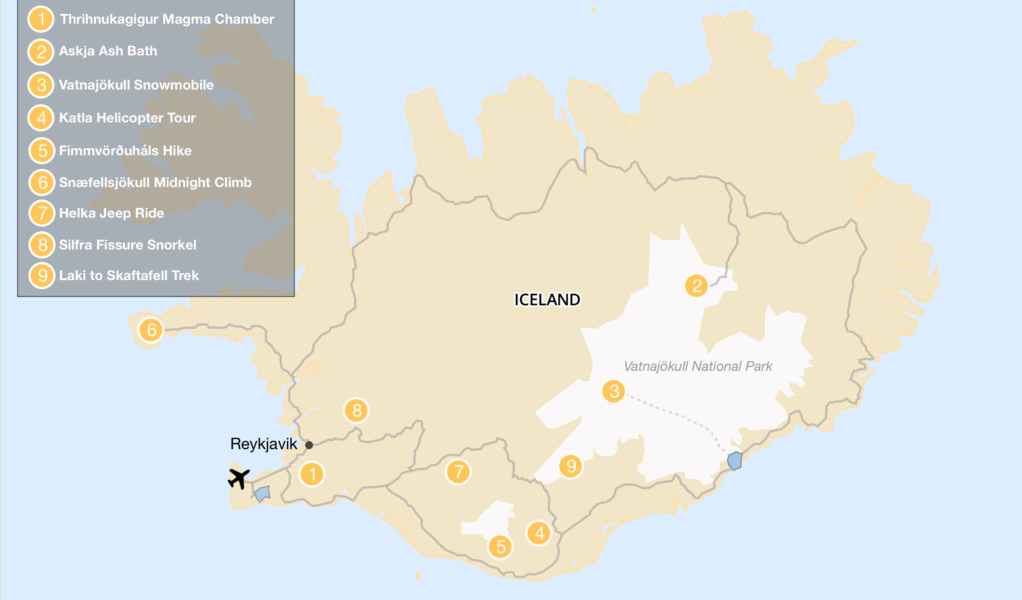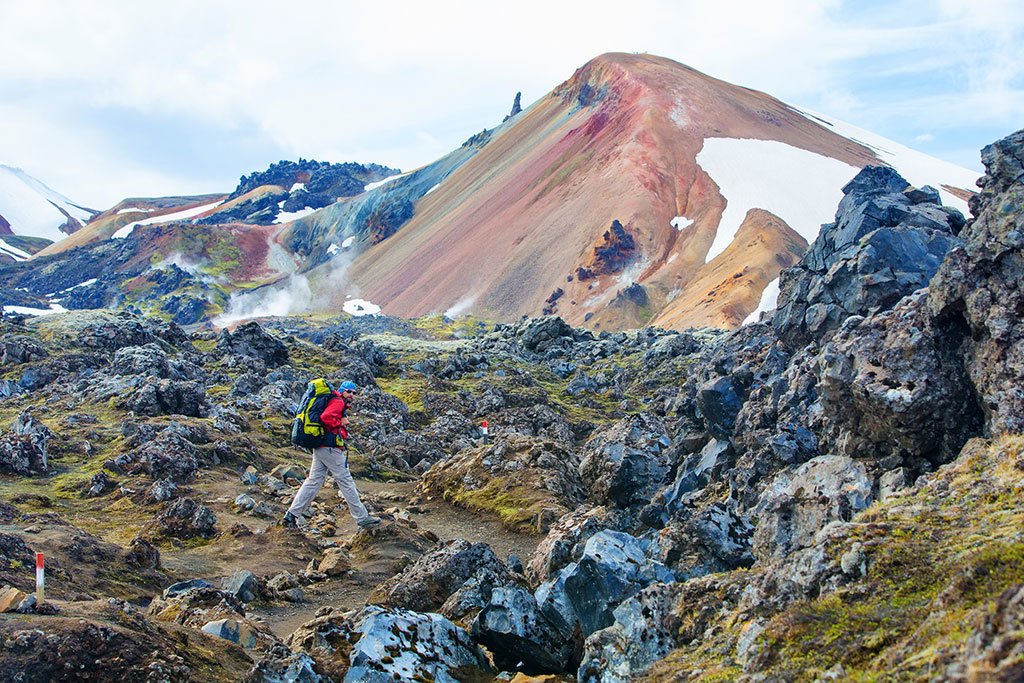
You can’t visit the Land of Fire and Ice without getting to know Iceland’s famous Volcanoes. Sure you could drive to them and look from afar, but where’s the fun in that? Here are 9 unique ways to experience the best Volcanoes in Iceland (plus a bonus if you keep reading!).
Iceland Volcanoes 101: A Land Forged in Fire and Ice Iceland, a Nordic nation renowned for its breathtaking landscapes, is also a geological hotspot, home to approximately 130 volcanoes. Of these, a remarkable 18 have displayed activity within the last century, a testament to the dynamic forces shaping this island nation. The country’s rich geothermic activity is a direct consequence of its location on the Mid-Atlantic Ridge, a divergent plate boundary where the tectonic plates of North America and Eurasia meet and slowly drift apart. This constant movement and interaction beneath the Earth’s surface fuels the volcanic phenomena that define much of Iceland’s unique character. The eruption of Eyjafjallajökull in 2010, which caused widespread flight disruptions across Europe, paradoxically ignited a surge in tourism to Iceland. The event awakened a sense of adventure and wonder in travelers, drawing them to witness firsthand the raw power and beauty of this volcanic landscape. But, enough with the introductory information and hopefully-not-too-terrible puns; it’s time to embark on some unforgettable adventures! Prepare to delve into the heart of Iceland’s volcanic wonders, where the earth breathes fire and ice, and where every corner reveals a new geological marvel.
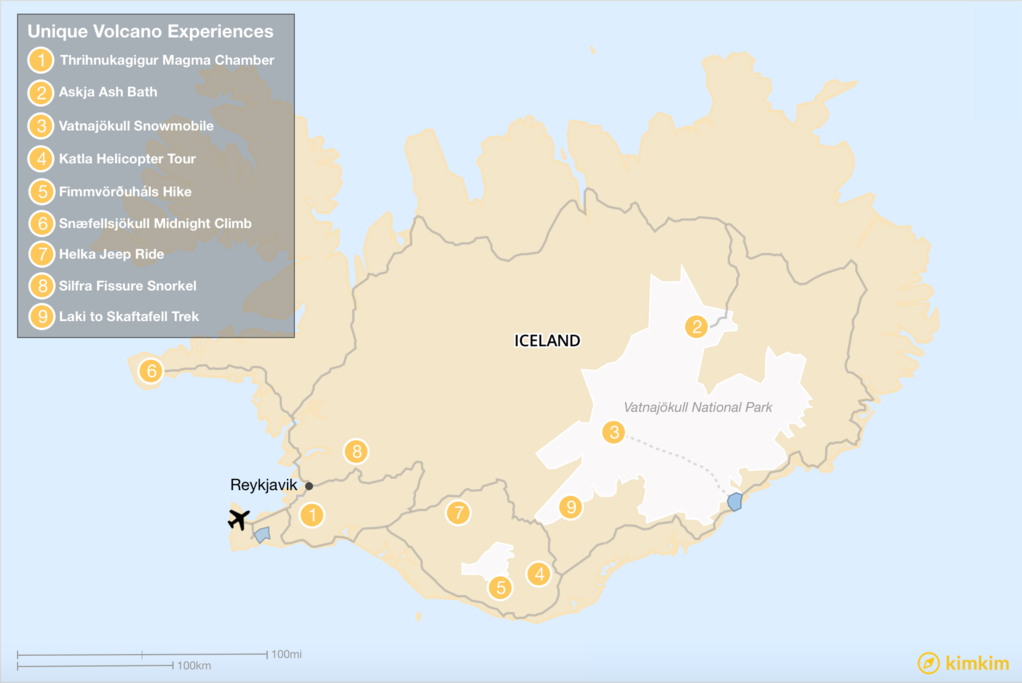
1. Descend into Thrihnukagigur’s Magma Chamber: A Journey to the Earth’s Core
Yes, you read that absolutely correctly. Since 2012, an extraordinary opportunity has been available to intrepid travelers: the chance to descend into Thrihnukagigur (Þríhnúkagígur) and explore its vast, awe-inspiring magma chamber from the inside. This is not your typical tourist activity; it’s a journey into the very heart of a volcano, a glimpse into the geological processes that have shaped our planet. The adventure begins with a scenic 2-mile hike across the rugged Icelandic terrain, a prelude to the main event. Upon reaching the volcano’s opening, you’ll board a specially designed elevator that will gently lower you into the depths of the magma chamber (thankfully devoid of molten rock). This volcano has been dormant for approximately 4,000 years, a period of quiescence following an eruption that created three substantial chambers deep within the earth. Once you reach the bottom, you’ll be able to wander around a space that’s roughly the size of three basketball courts (50×70 meters, or 160×220 feet), descending to depths of up to 200 meters, or 700 feet. To put this into perspective, the chamber is large enough to comfortably accommodate the entire Statue of Liberty! Over millennia, the intense heat and immense pressure have painted the rock walls with a kaleidoscope of breathtaking colors. Take as many pictures as your camera can hold to capture the beauty of this subterranean world. However, remember to leave no trace behind; admire the unique geological formations, but please refrain from taking any souvenirs with you. Thrihnukagigur offers a truly unparalleled experience, a chance to witness the Earth’s raw power and artistry from within.
2. Take an ash bath in “Hell” at Askja: A Geothermal Oasis in the Highlands
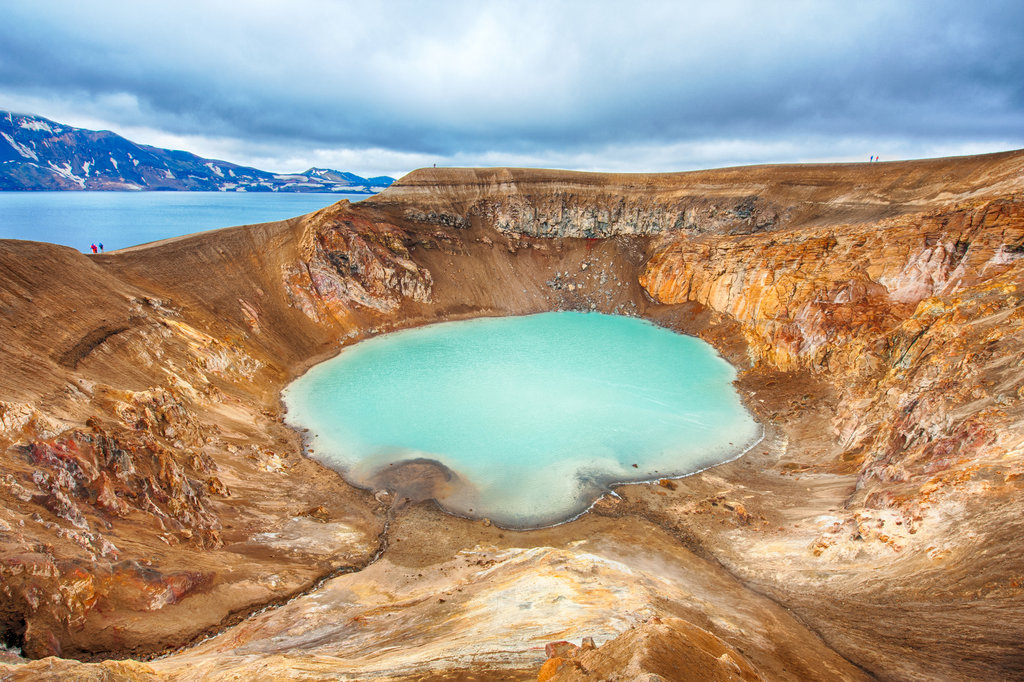
Are you starting to notice a theme here? Don’t worry; this article is not about venturing inside every single volcano in Iceland! The Víti crater (the name means “Hell” in the Icelandic language) was born in 1875 during a dramatic and powerful eruption of Askja, a caldera located in the remote Icelandic Highlands. The resulting crater gradually filled with water, creating a stunning geothermal lake that beckons adventurous visitors. Today, you can take a dip in the milky blue waters of this unique lake. Immerse yourself in its warmth and cover your skin with the soft, white ash from the lake bottom. While the experience is incredibly rejuvenating, try to momentarily ignore the characteristic smell of sulfur that permeates the air. Reaching this secluded geothermal pool requires a bit of planning and preparation. A sturdy 4×4 vehicle is essential for navigating the rugged terrain of the Highlands, and a short hike is necessary to reach the crater’s edge. But the reward is well worth the effort: a chance to soak in a natural hot spring surrounded by the stark, otherworldly beauty of the Icelandic Highlands. Askja and its Víti crater offer an unforgettable experience, a blend of adventure, relaxation, and natural wonder.
3. Snowmobile over Grimsvotn and Bardarbunga on Vatnajökull Glacier: Exploring the Intersection of Fire and Ice
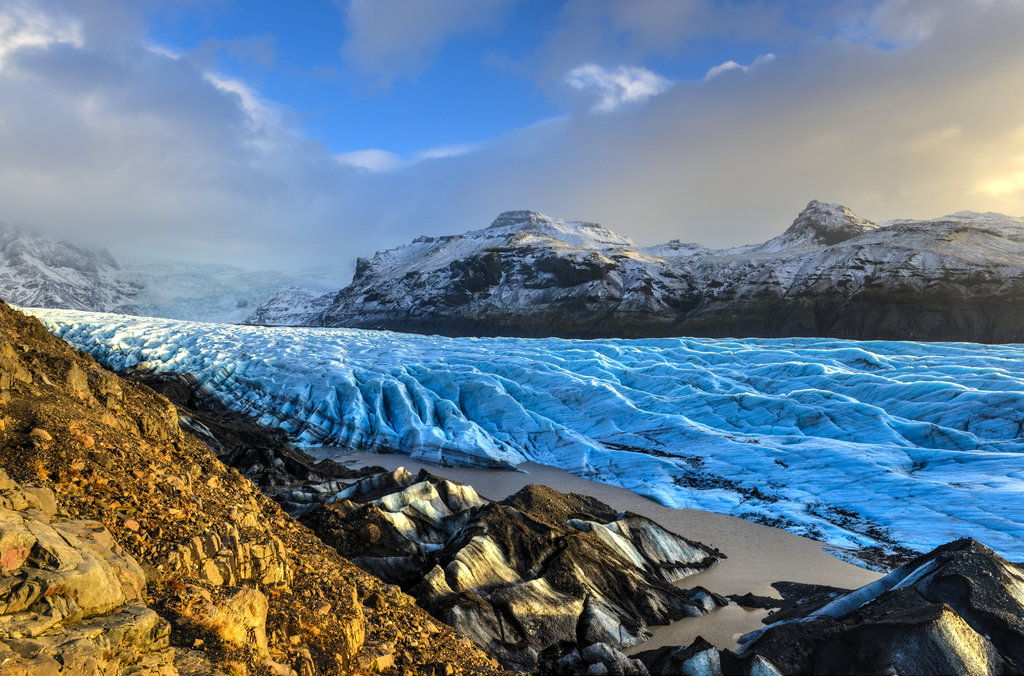
Remember that Iceland is celebrated as the Land of Fire *and Ice*. Nowhere is this duality more apparent than in Vatnajökull National Park, situated on the south shore. This vast protected area is home to a multitude of natural wonders, some of which remain hidden beneath the surface. Grimsvotn and Bardarbunga, two active volcanoes, lie deep beneath the immense ice cap of Vatnajökull. The Grímsvötn volcanic system is notorious for its volatility, recognized as one of the most active in Iceland. When it erupts, the immense heat rapidly melts the surrounding ice, resulting in substantial ash clouds that darken the skies. Bardarbunga’s last eruption occurred in February 2015, serving as a stark reminder of the region’s geological activity. In the late 18th century, the Laki eruption (part of the same volcanic system) unleashed a torrent of ash and gasses that had devastating consequences. The atmospheric pollution led to a severe famine that decimated Iceland’s population, claiming the lives of approximately 25% of its inhabitants (a significantly larger proportion given the smaller population at the time). But don’t let history deter you! Today, you can explore this dramatic landscape in a thrilling and safe way: by snowmobile. Traverse the icy plains of Vatnajökull, knowing that beneath you lie the slumbering giants of Grimsvotn and Bardarbunga. This exhilarating experience offers a unique perspective on Iceland’s volcanic landscape, a reminder of the powerful forces that have shaped this extraordinary island.
4. Hover over Katla, Iceland’s most dangerous Volcano: A Bird’s-Eye View of a Geological Powerhouse
Katla, a name that strikes a note of caution, is located beneath the Mýrdalsjökull glacier in the southern part of Iceland. This volcano is renowned for its capacity to unleash major glacial floods, known as *jökulhlaups*, when it erupts. The last major eruption of Katla occurred in 1918, causing widespread devastation to nearby farms and houses. Scientists closely monitor Katla, and there is a general consensus that another eruption is due relatively soon. Given the potential risks, you might prefer to experience Katla from a safe distance, gaining a breathtaking aerial view on a Helicopter Tour. Soaring above the Mýrdalsjökull glacier, you’ll witness the immense scale of Katla and its surrounding landscape. If a helicopter tour still feels a bit too close for comfort, you can enjoy a fantastic (though more distant) view of Katla while undertaking the popular Fimmvörðuháls hike (described in more detail next). This challenging but rewarding trek offers panoramic views of the surrounding glaciers, volcanoes, and lava fields. Whether you choose a helicopter tour or a hiking adventure, experiencing Katla is an unforgettable encounter with one of Iceland’s most formidable geological forces.
Chat with a local specialist who can help organize your trip.
5. Hike Fimmvörðuháls: A Trek Between Giants
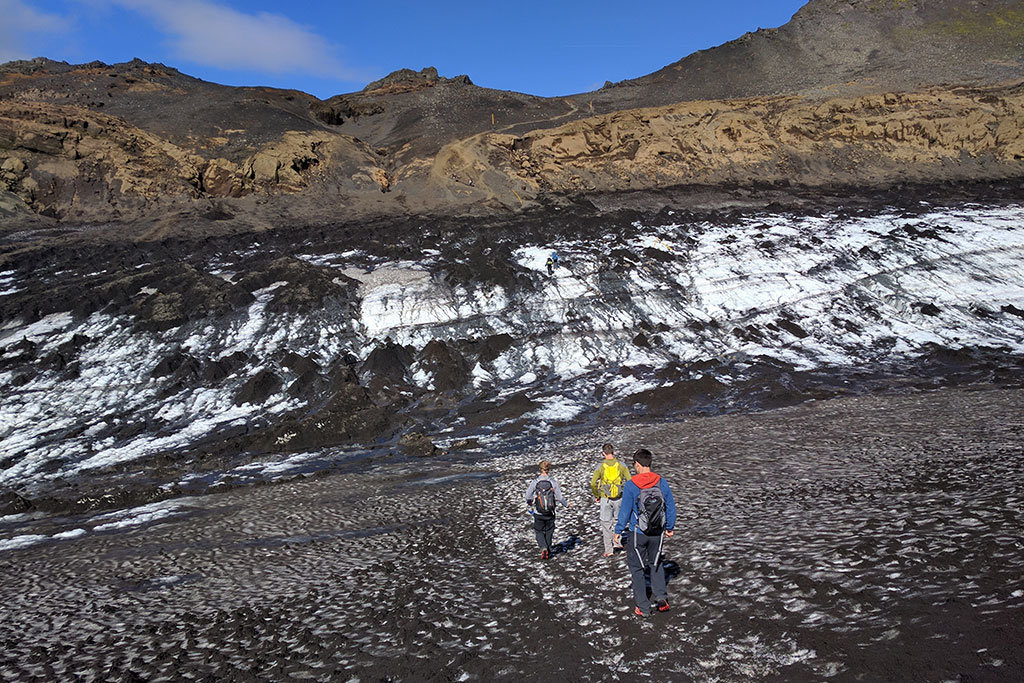
The 25-kilometer (approximately 15.5 miles) Fimmvörðuháls hike, nestled in the spectacular region between the Eyjafjallajökull and Mýrdalsjökull Glaciers, consistently ranks among the most beautiful and rewarding hiking experiences in Iceland. This challenging trail winds its way through a landscape sculpted by volcanic activity, offering unparalleled views of glaciers, lava fields, and imposing volcanoes. Adding to the hike’s unique appeal are two relatively recent additions to the landscape: the craters Magni and Móði (named after the sons of Thor in Norse mythology). These craters were formed during the 2010 eruption of Eyjafjallajökull, providing a tangible reminder of the region’s dynamic geological processes. Furthermore, the Fimmvörðuháls hike presents stunning views of Katla, Iceland’s most dangerous volcano, which is, according to scientists, overdue for another eruption. The panoramic vistas from the trail are simply breathtaking, showcasing the raw beauty and geological power of Iceland. If you prefer to break up the hike into two days rather than tackling it in one go, you can find comfortable accommodation in a mountain hut located along the trail. Spending a night in the Icelandic Highlands is a unique experience in itself, allowing you to fully immerse yourself in the tranquility and solitude of this remote landscape. The Fimmvörðuháls hike is an unforgettable adventure for experienced hikers, offering a chance to witness Iceland’s volcanic wonders up close and personal.
6. Take a Midnight Journey to the Center of the Earth on Snæfellsjökull: Following in the Footsteps of Jules Verne
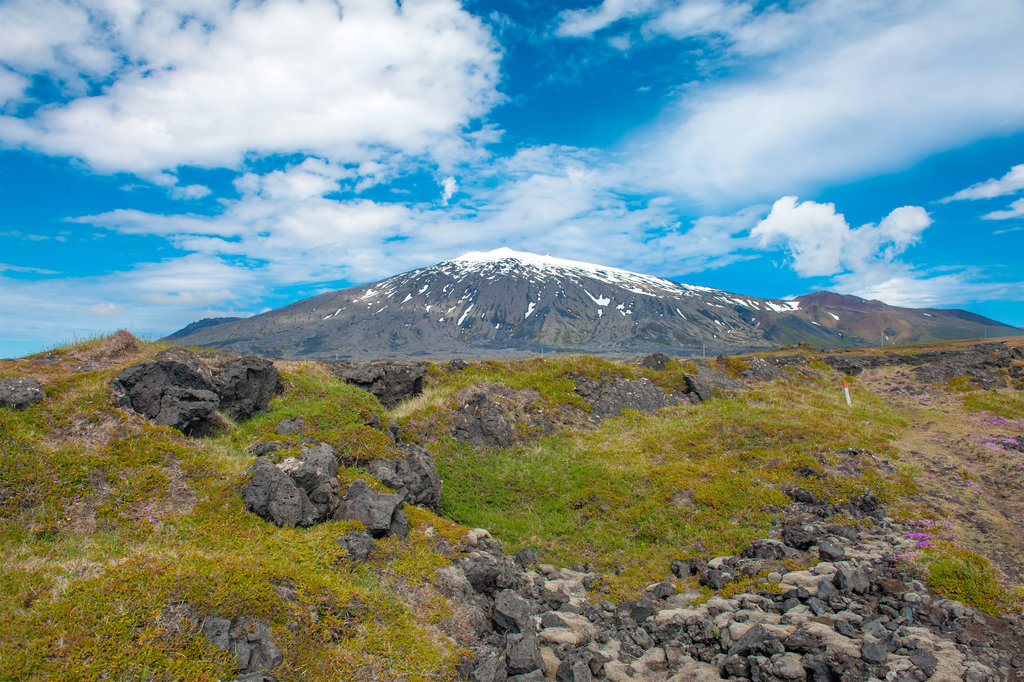
If you’re seeking a less actively volcanic experience, Snæfellsjökull provides an excellent choice. This majestic stratovolcano, capped by a glacier, last erupted approximately 2,000 years ago (give or take 150 years), offering a sense of geological stability. If the name Snæfellsjökull sounds familiar, you may be a devoted fan of Jules Verne, the visionary author of science fiction. Verne immortalized Snæfellsjökull as the entrance to the Earth’s core in his classic novel, *Journey to the Center of the Earth*. Today, you can embark on your own adventure to the top of Snæfellsjökull. If you plan your visit during the months of June or July, you can take advantage of Iceland’s famously long days and undertake a climb at midnight. Imagine ascending the glacier-covered slopes under the ethereal glow of the midnight sun! In 2012, an unusual phenomenon occurred: the summit of Snæfellsjökull was ice-free for the first time ever recorded. This event highlights the ongoing effects of climate change on Iceland’s glaciers. Climbing Snæfellsjökull is a challenging but rewarding experience, offering breathtaking views of the Snæfellsnes Peninsula and the surrounding ocean. It’s a chance to connect with both nature and literature, following in the footsteps of Jules Verne and experiencing the magic of Iceland’s volcanic landscape.
7. Drive through the “Gateway of Hell” and up Hekla: A Volcanic Ascent
Hekla is one of Iceland’s most regularly active volcanoes, with its most recent eruption occurring in 2000. However, if that makes you feel safe, it’s important to note that its eruptions typically occur every 10 years on average, leading scientists to believe that it’s currently overdue for another eruption. While a potential future eruption is possible, it is not expected to be the same size as the eruption from Eyjafjallajökull in 2010, an event that grounded air traffic all over Europe. For this adventure, it is best to err on the side of caution and opt for a high-powered off-road jeep to drive directly to the summit and then safely back down. While in the surrounding area, make sure you take the time to explore the diverse Landmannalaugar region, which is famous for its stunning hikes, beautiful waterfalls and many other amazing experiences. Hekla is an exhilarating encounter with one of Iceland’s most active volcanoes, but always prioritize safety and heed the advice of local experts.
8. Snorkel between continents at the Silfra Fissure: A Dive into Geological History
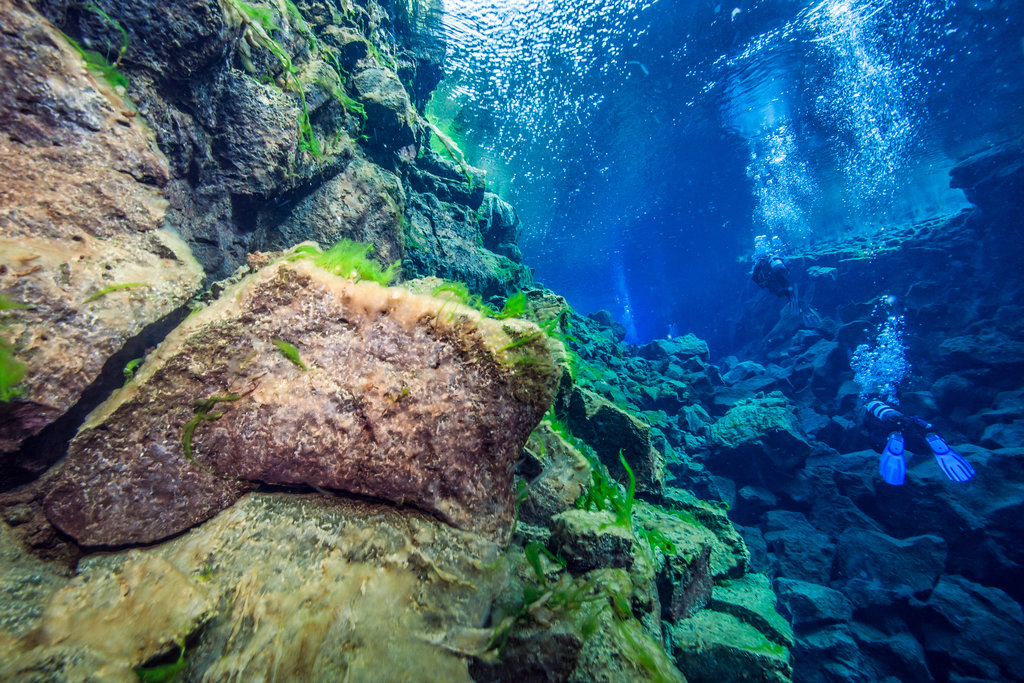
A trip to Thingvellir National Park provides a unique opportunity to witness the very source of Iceland’s remarkable geothermic activity. Here, you can engage in an unforgettable experience: swimming between two continental plates, those of North America and Eurasia, which meet and slowly separate at the Mid-Atlantic Ridge. With each passing year, the plates drift apart by approximately 2 centimeters (just under an inch), a subtle but constant movement that builds up tension beneath the surface, resulting in earthquakes and various other forms of geothermic activity. Plunge into the crystal-clear waters of the Silfra fissure and embark on a snorkeling (or scuba diving adventure if you have the required certification) to witness the deep blue water at a refreshingly chilly 2 degrees Celsius or 35 degrees Fahrenheit. But don’t worry, all tours provide insulated dry suits for thermal protection in the water. The Silfra fissure is considered by many to be one of the top dive sites in the world due to its unique location between two continents and the incredible water clarity. Exploring Thingvellir National Park is a chance to connect with Iceland’s geological heritage, understanding the dynamic forces that shape this incredible island.
9. Sleep on the World’s Most Deadly Volcano: An Immersive Adventure
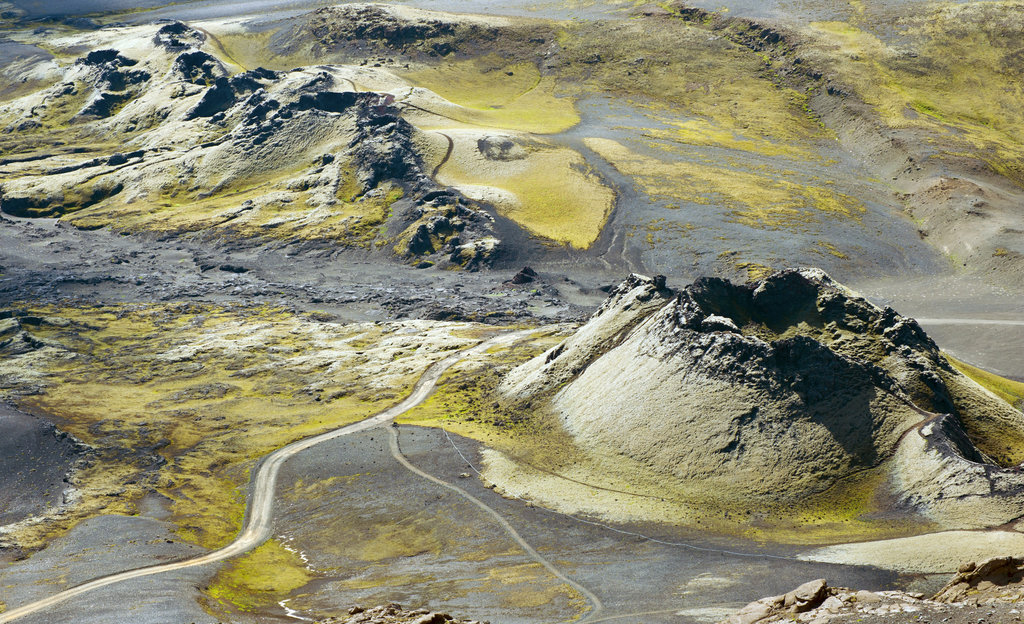
If you’ve made it this far, why stop now? Embark on a challenging 9-day trek from Laki to Skaftafell, immersing yourself in the rugged beauty of Iceland’s wilderness. The Laki volcano has the historical title of “most deadly volcano in historical times”. In the course of an eight-month period, from 1783-1784, the toxic gasses released during the eruption killed more than 50% of all livestock in Iceland. In addition, the global temperature dropped during that period, which resulted in failing crops across Europe as well as draughts in India, leading to an estimated 6 million deaths across the globe. Doesn’t that make you want to sleep right on top of it? This trek is not for the faint of heart, as it requires physical endurance and a willingness to embrace the challenges of the Icelandic wilderness. However, the rewards are immeasurable: a chance to witness breathtaking landscapes, connect with nature on a deep level, and experience the raw power of Iceland’s volcanic landscape. The Laki-Skaftafell trek is an unforgettable adventure for those seeking a truly immersive and challenging experience.
(Bonus) Ride on a Horse over Lava: A Gentle Exploration of Geothermal Wonders
And do not worry, the horses have quite thick hoofs. In addition, the lava fields are all cooled down by now. Take the time to explore the breathtaking geothermal valleys on the outskirts of Rekjavik. Bathe and relax in hot springs, wander through green meadows and experience a much slower pace as you question all of your life decisions. This activity is an ideal way to appreciate the quieter charms of Iceland and reflect on your past.
B-1181

